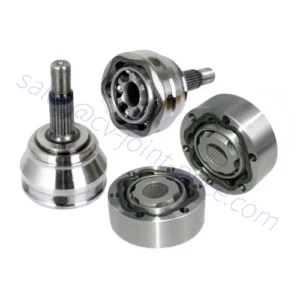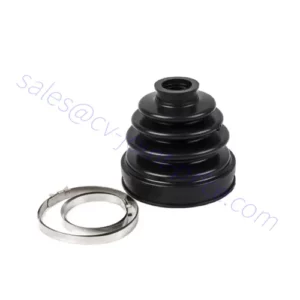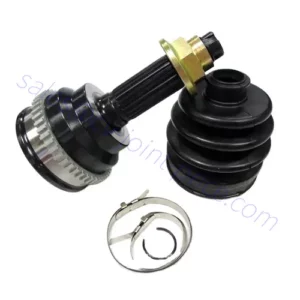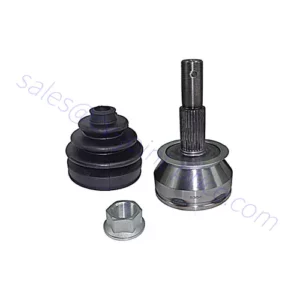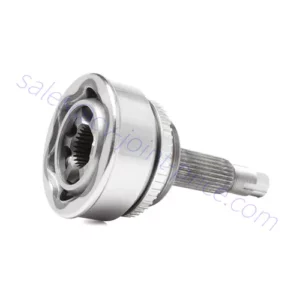CV Joint Manufactureur
Constant-velocity joints, also called CV joints are located on the ends of drive shafts. They are crucial to connect driveshafts with the transmission as well as wheels.
What we do
CV-joints are the main parts which allow drive shafts accomplish their tasks. They function in conjunction with:
Increase the flexibility of your car's wheels.
If you’re navigating an open hole there are two possible outcomes that can occur:
If the shaft’s rigidity is sturdy enough the shaft is strong enough, the entire car will be able to move upwards in one direction, causing the ride to become extremely uncomfortable.
The stiff shafts could fall off due to the weight of your car, disengaging the wheels from your vehicle and you could have your car’s wheels sway off of you!
Transfer the rotational power of your transmission onto the wheels of the vehicle with efficiency.
Ball bearings are located within the joints. Because of their form of the round, ball bearings have very little contact area, resulting in very little friction when moving.
This enables the vehicle the ability to rotate and move force without losing any to heat.
To rotate the wheels of the car at a constant rate regardless of the operating angle.
The shafts that are connected to the input and output shaft will move at the same speed irrespective of whether the angle of operation is set. This ensures an even transmission of energy from the shaft that is the input into the shaft that outputs, without creating any fluctuations in speed.
Application of CV Joint
CV joints are primarily used in automotive applications, particularly in front-wheel drive and all-wheel drive vehicles. They play a vital role in transmitting power from the engine and transmission to the wheels while allowing for suspension movement. Here are some specific applications of CV joints:
-
Front-Wheel Drive Vehicles
In front-wheel drive cars, CV joints are used to transfer power from the transmission to the front wheels. They allow the wheels to rotate and steer while accommodating the vertical movement of the suspension.
-
All-Wheel Drive Vehicles
All-wheel drive vehicles utilize CV joints to distribute power to all four wheels. They enable the wheels to receive torque and adapt to different road conditions while maintaining a constant velocity.
-
Axle Shafts
CV joints are an integral part of the axle shafts, which connect the transmission to the wheels. The CV joints at each end of the axle shaft allow for the efficient transfer of power, while also accommodating the movement of the suspension.
-
Off-Road Vehicles
CV joints are commonly used in off-road vehicles, such as SUVs and trucks, which often encounter uneven terrains. The flexibility of CV joints allows the wheels to articulate over obstacles and absorb shocks, providing improved traction and durability.
-
Industrial Machinery
CV joints find applications in various industrial machinery, such as agricultural equipment, construction machinery, and material handling equipment. They are used to transmit power in applications that require flexibility and constant velocity, even when dealing with uneven terrain or articulating components.
CV Joint for Sale
As a product manufacturer, we will do our best to serve you. If you need customized products, or the products you need are not found in our website, or need a product catalog, don’t worry, more of our products are still being uploaded. You can email us directly, we will reply you within 24 hours!
What Do Bad Cv Joints Sound Like
When CV joints are worn out or damaged, they can produce specific sounds that indicate a problem. Here are some common sounds associated with bad CV joints:
Clicking or Popping Noise: One of the most noticeable signs of a failing CV joint is a clicking or popping noise, especially when making turns. The noise may become more pronounced when accelerating or decelerating during a turn. This sound often indicates that the CV joint’s bearings have worn out or that the joint itself is damaged.
Grinding or Rumbling Noise: A damaged or worn CV joint can produce a grinding or rumbling noise, particularly at higher speeds. This sound may be a result of the joint’s components rubbing against each other due to loss of lubrication or excessive wear. The grinding noise can be continuous or intermittent, depending on the severity of the damage.
Whining or Humming Sound: A failing CV joint can also produce a whining or humming sound, which may increase with speed. This noise is typically caused by worn bearings within the joint. As the bearings wear down, the sound becomes more noticeable, indicating the need for inspection and potential replacement.
It’s important to note that these sounds can also be caused by other issues in the drivetrain or suspension system. Therefore, it’s recommended to have a qualified mechanic inspect your vehicle to accurately diagnose the source of the noise and determine if the CV joints are the culprit.
“
CV joints are typically located at the ends of the drive axles, where they connect to the wheels. They consist of an inner and outer joint, both containing a set of bearings that enable rotational movement. These joints are packed with grease and enclosed in a protective rubber or plastic boot to keep dirt, debris, and moisture out while retaining the lubricating grease inside.
“
Features of CV Joint
The features of CV (constant velocity) joints include:
Flexibility: CV joints are designed to provide flexibility in the drivetrain system, allowing for the up-and-down movement of the suspension while maintaining a constant velocity.
Constant Velocity: As the name suggests, CV joints are designed to maintain a constant velocity between the transmission and the wheels.
Bearing System: CV joints incorporate a bearing system that enables rotational movement.
Grease Lubrication: CV joints are typically filled with a special grease that lubricates the bearings and reduces friction and wear.
Protective Boots: CV joints are enclosed in protective rubber or plastic boots that shield them from dirt, debris, and moisture.
Durability: CV joints are designed to withstand the demands of regular use and the stresses imposed by the drivetrain.
Drive Shaft With Cv Joint
A drive shaft with a CV joint is a type of drive shaft that incorporates a constant velocity joint (CV joint) at one or both ends. This configuration is commonly found in vehicles with independent rear suspension or four-wheel drive systems.
In this setup, the drive shaft connects the transmission or transfer case to the rear differential or front differential in a four-wheel drive vehicle. The CV joint on the drive shaft allows for the transfer of power while accommodating the up-and-down movement of the suspension and the articulation of the wheels.
The use of CV joints on the drive shaft provides several advantages:
Flexibility
The CV joint allows the drive shaft to flex and articulates with the suspension movement, ensuring a constant velocity transfer of power.
Smooth Power Transfer
The CV joint allows for smooth and efficient power transfer from the transmission or transfer case to the differential.
Improved Durability
The use of CV joints on the drive shaft helps distribute the load and torque evenly, reducing stress and wear on the drivetrain components.

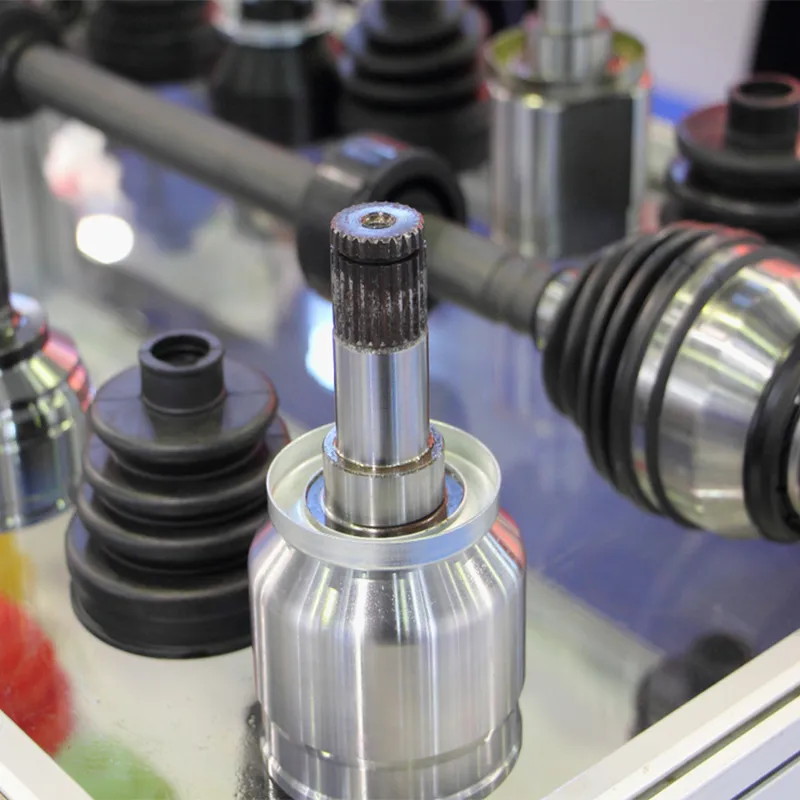



How to Look After CV Joints
The secret to obtaining longevity from your CV joints is to avoid driving aggressively. Mechanical sympathy is essential to long-lasting, trouble-free driving. Here are our top five strategies to avoid a damaged CV Joint:
Custom Design
As a service to our customers, we offer a wealth of manufacturing experience and talent to meet the special needs of custom parts. Our in-house engineering team has extensive experience in designing and custom engineering solutions to meet your requirements. If you don’t see what you’re looking for in our standard range, please inquire about custom options.
